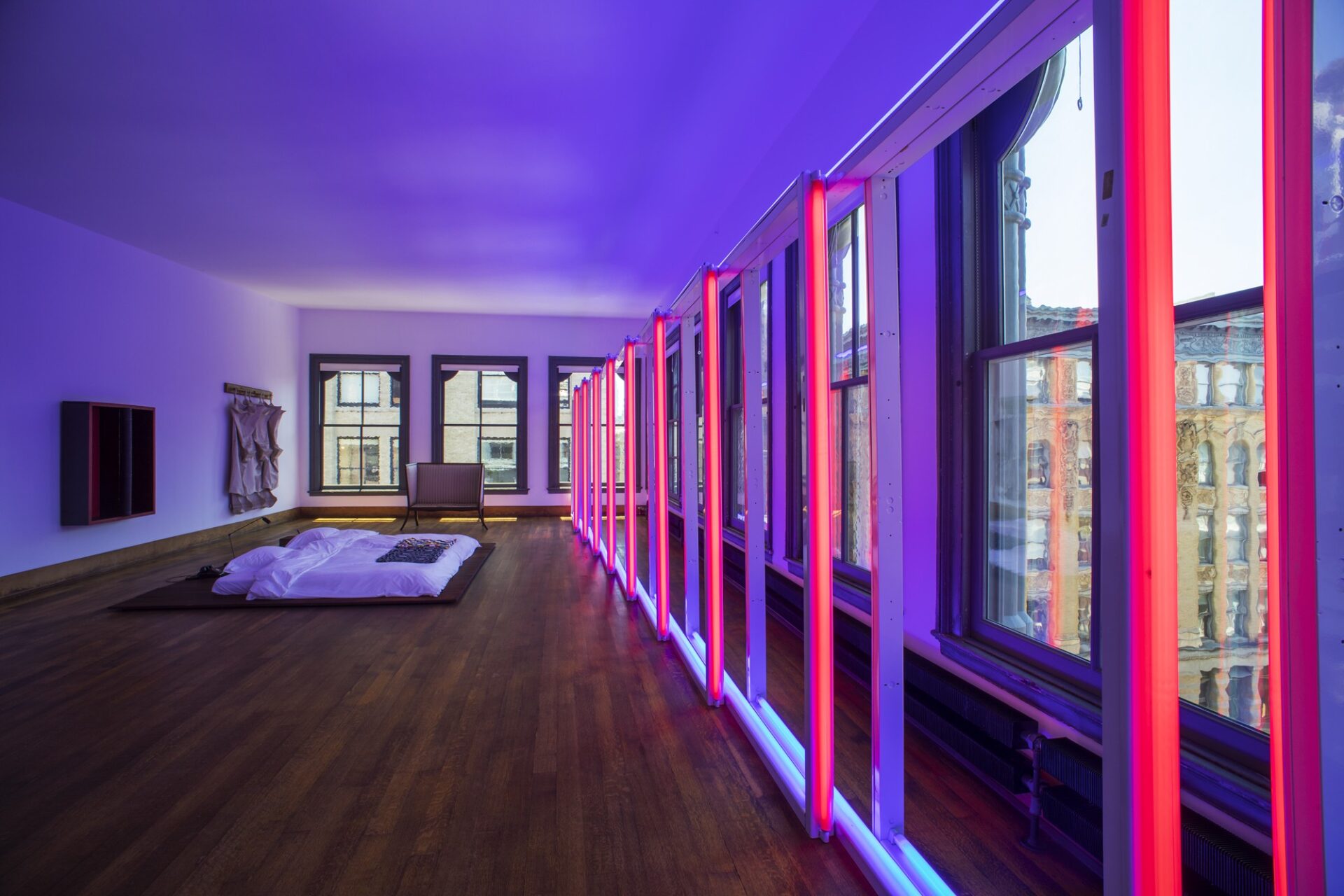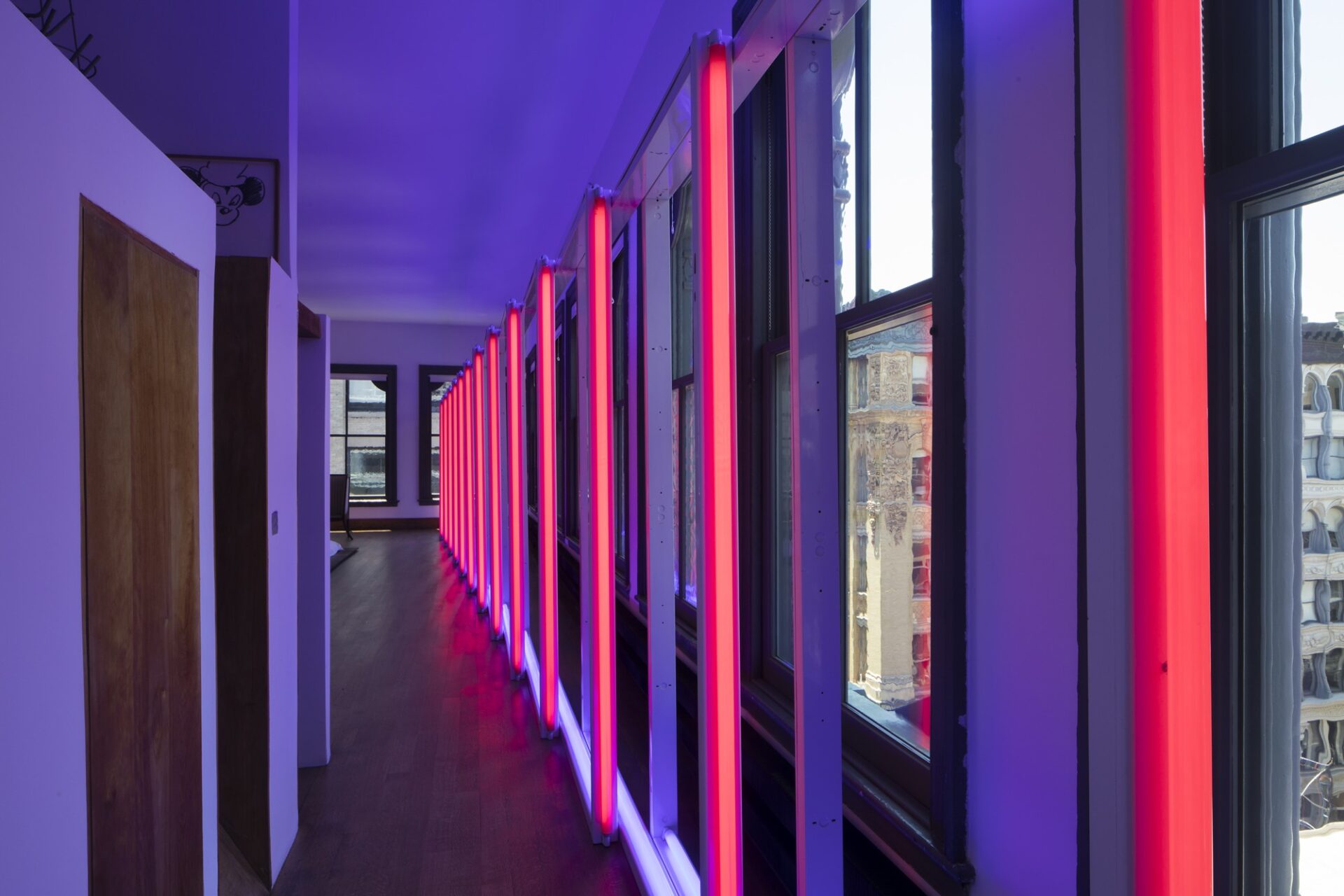Donald Judd met Dan Flavin in 1962 at a gathering in a Brooklyn apartment organized to discuss the possibility of a cooperative artist-run gallery. They exhibited together a year later when their work was included in New Work: Part I at Richard Bellamy’s Green Gallery, New York (January 8–February 2, 1963). As their mutual friend, the artist John Wesley, has said of their friendship, “[the two] became Flavin and Judd for a while. The two names were together.”1
This site-specific installation was created by Dan Flavin at 101 Spring Street in 1970. The colors and configuration are similar to an artificial barrier of blue, red and blue fluorescent light (to Flavin Starbuck Judd), 1968, in the collection of the Solomon R. Guggenheim Museum. Both the untitled installation at Spring Street and the piece dedicated to Flavin Starbuck Judd, Judd’s son, are sometimes referred to as “barriers,” where the width is determined by the dimensions of the room; the piece is intended to extend from wall to wall.
In his December 1965 article “‘ . . . in daylight or cool white’” for Artforum, Flavin wrote, “I knew that the actual space of a room could be broken down and played with by planting illusions of real light (electric light) at crucial junctions in the room’s composition.”2 In the summer of 1967, artist Mel Bochner noted in Arts Magazine that Flavin’s work exhibited “an acute awareness of the phenomenology of rooms.”3
This work was conceived as an edition of three, one of which is in the collection of Dia Art Foundation.



